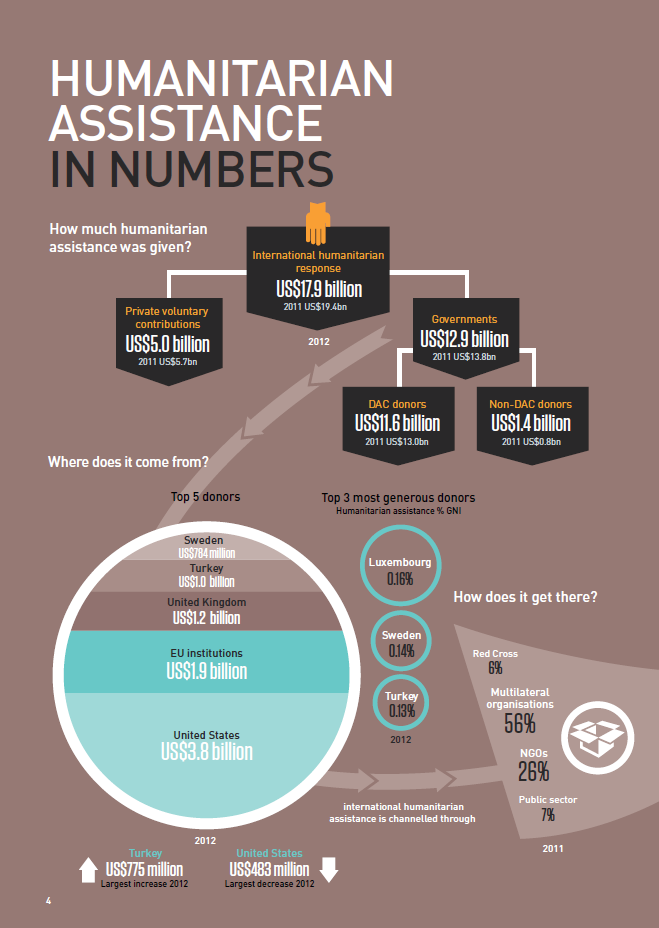Total humanitarian aid fell from $19.4 billion in 2011 to $17.9 billion in 2012 according to this year’s Global Humanitarian Assistance report, a fall of 8%. The report brands 2012 as the “year of recurring disasters”, with no mega-disasters like Haiti or the Japanese tsunami to galvanise support for humanitarian assistance. But that isn’t to say need for humanitarian assistance has lessened, with only 62.7% of the requirements for the United Nations Consolidated Appeal Process being funded, making 2012 the year when the smallest proportion of needs have been met for over a decade. The report also reveals the devastating impact of famine in Somalia, with estimates of the death toll between 2010-12 reaching 257,500, approximately 4.6% of the country’s population.
While the reports of human suffering and a negative trend in funding are sobering, the report does highlight ways in which actors are doing more with what they have. These initiatives include greater use of cash transfer programs, increasing access to information, improved coordination and leadership and access to new technologies.
The report also highlights the growing diversity in the humanitarian assistance landscape, with non-DAC donors contributions (in large part thanks to Turkey’s huge surge in contributions) increasing to $1.4 billion (18% of total humanitarian aid).
The report anticipates Syria will be a prominent feature of humanitarian aid this year and therefore of next year’s publication.




Leave a Comment